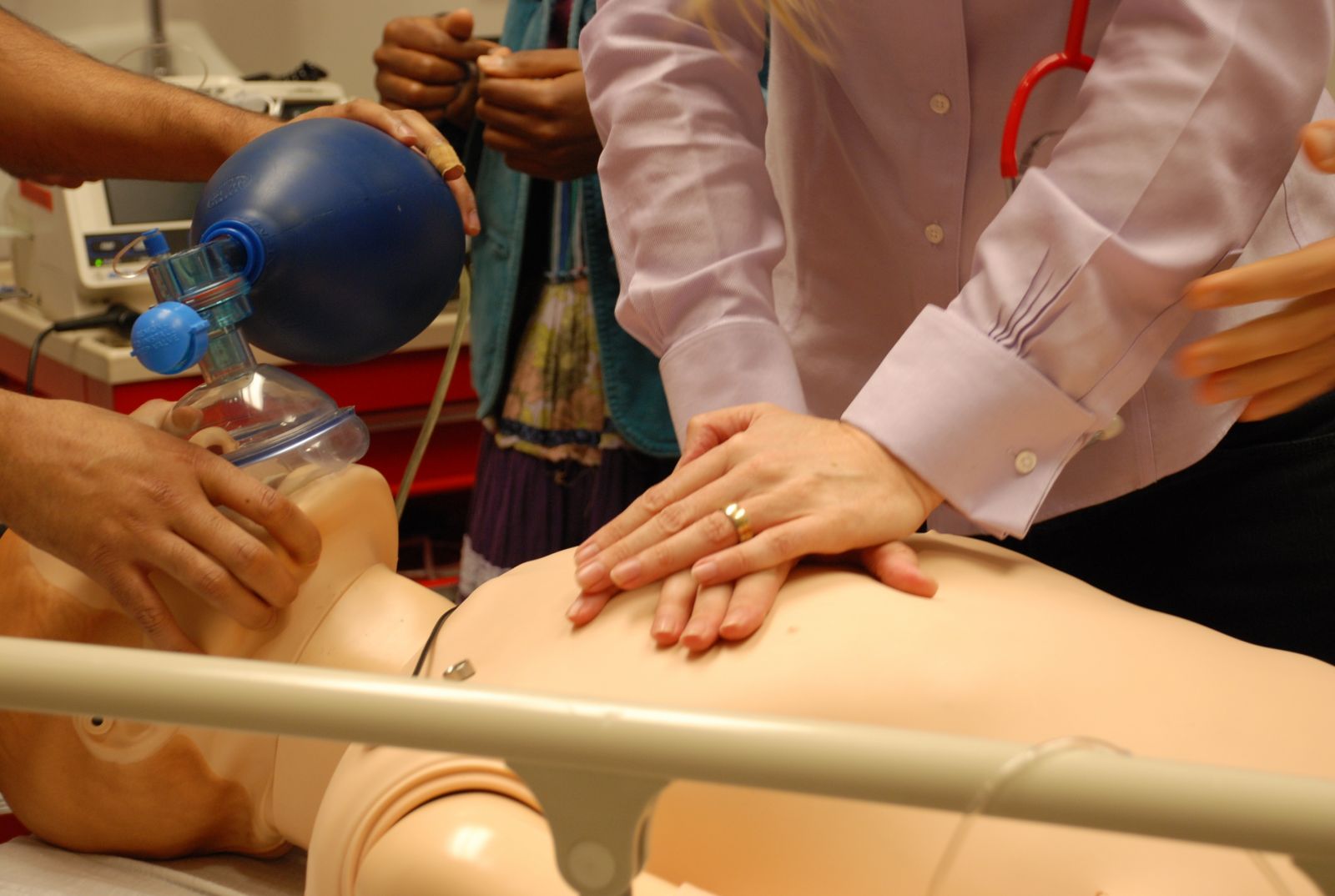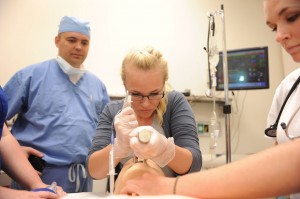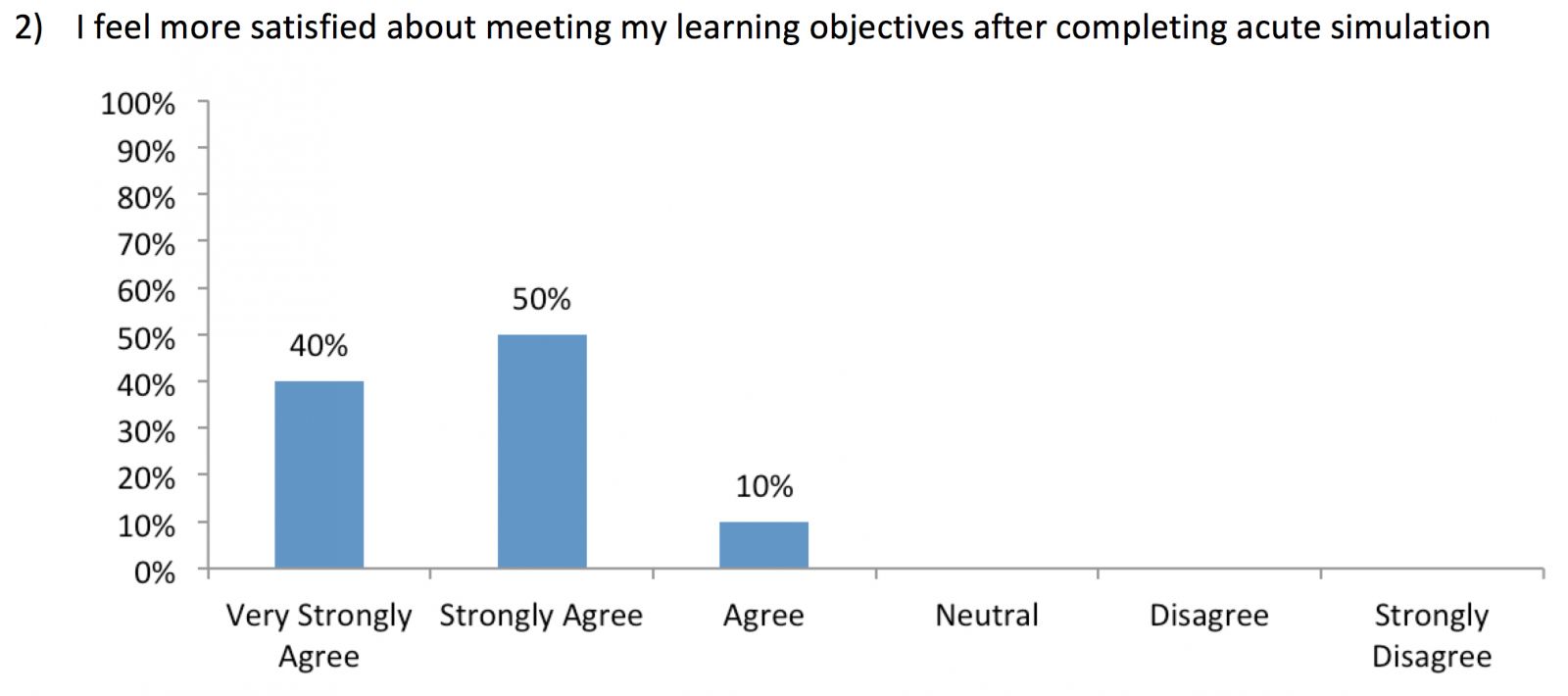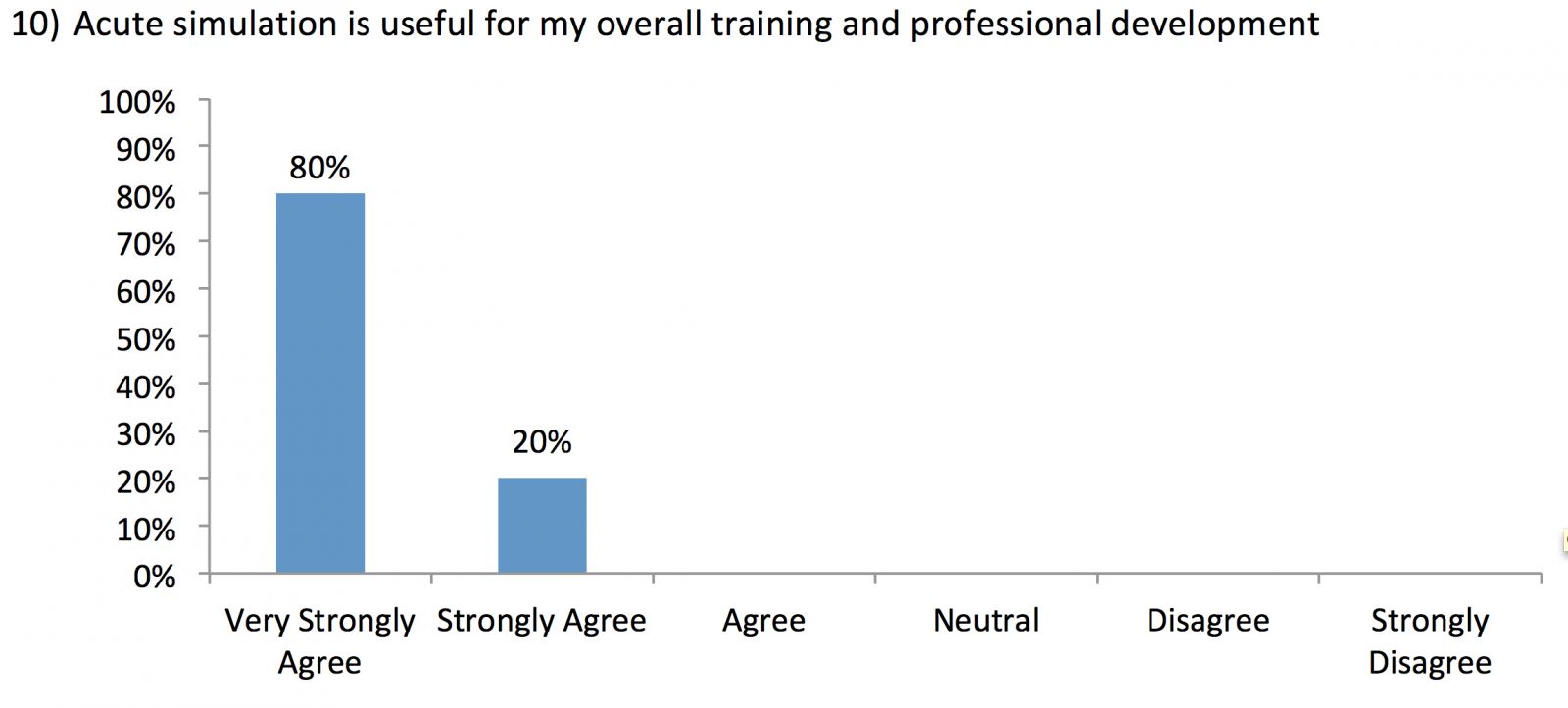


Theme
7II Simulation and Simulated Patients
INSTITUTION
University of Birmingham Clinical Teaching Academy, Alexandra Hospital, Redditch, UK

Recognition and management of acutely ill ptients is a key skill for newly qualified junior doctors, and yet many feel anxious and lack confidence when confronted with these situations1. In light of this the University of Birmingham Medical School has devised a semester long module for final year students based on the 'Acutely Ill Patient'. Whilst being of great benefit to the students, this module has provided the following challenges to the staff facilitating its delivery in the Teaching Academy Hospitals:
- Opportunities for learners to experience acutely ill patients is often sporadic, making it difficult to provide each student with standardised teaching to meet all the predetermined learning outcomes.
- Successful management of these patients in real life is acutely time dependent, as a result students are often left as bystanders, watching from a distance, without gaining any real experience.
- As well as core acute medical skills, there are a range of communication, team working and human factor skills which students need to develop in order to perform well in these scenarios.

Simulation has an established role in teaching resuscitation2, teamworking skills and human factors3,4, however often these skills are taught separately as part of isolated training sessions.
We have developed a range of novel uses of simulation which were regularly repeated at regular intervals during the students' placement. These sessions were designed to teach both the medical knowledge required and the associated skills needed to manage the acutely ill patient, so that the students will eventually be able to manage these types of patients safely and effectively.
1) Simulated Emergency Team (SET)
- Students were split into groups and took turns to act as the Simulated Emergency Team (SET). The students were instructed to meet each morning to decide which role would be assigned to each member of the team. At various points that week the SET bleeps were activated and students had to attend the simulated emergency immediately.
- On arrival at the simulation setting they were presented with a manikin requiring advanced life support. The students were expected to take their predetermined roles and work as a team to manage the patient without any direct input from the supervising teaching team.
- The clinical teaching staff observed the students undertaking the scenarios and gave them structured feedback at the conclusion of the session commenting on the medical, human factors aspects and interproffessional skills demonstrated during the scenario.
2) Trauma Day
- Since the implementation of the UK National Trauma Network, patients requiring Advanced Trauma Life Support (ATLS) are managed infrequently in our hospital, making it challenging for all students to gain sufficient experience in this area.
- A single day intensive trauma course was designed to meet the students learning needs in detail.
- Focused seminars were given by senior Emergency Medicine staff on the core domains of the ATLS curriculum.
- After each seminar the students were divided into small groups and underwent simulation training on the topic just covered to further reinforce their learning.

3) Simulated Bed Side Teaching
- 20 different scenarios were designed to encompass the most common presentations of the acutely ill patient.
- Each week students worked through 2 simulation scenarios, in small groups.
- Scenarios could be paused at any point to provide for peer and trainer input to encouage discussion.
- Team working was encouraged to enable students to develop their communication skills.
- Each scenario was followed by feedback, reflection and detailed discussion around the case facilitated by an experience teaching fellow.
Student evaluation showed unanimous support for these varied sessions, which they felt provided a stimulating, realistic and safe learning environment, that enabled the students to help develop the wide range of skills required in this area.
Student Emergency Team:
Students found these sessions enjoyable, confidence building and more effective than other types none simulation based learning resulting in the aquisition of integrated clinical skills. When asked to identify the three main elements they had learnt from the sessions students independently identified medical knowledge, teamworking skills and human factors in almost equal proportions.

Trauma Day:
Students found the content of the Trauma Day highly relevant to their learning needs and enjoyed the focused tutorials followed by simulation to reinforce their learning. When asked to identify the three main points they had learnt from the day students independently identified medical knowledge, practical skills and teamworking skills.




The innovative sessions that were designed and implemented in this Teaching Academy have enabled final year students to acquire the necessary skills and knowledge required to manage the acutely ill patient in a safe, but realistic and stimulating, learning environment. Furthermore, following these sessions students are able to recognise the core role played by teamworking and communication skills, in addition to medical knowledge, in the management of acutely ill patients.
The innovative use of simulation within clinical training is an effective tool for teaching the assessment and management of the acutely ill patient, and can enable a deeper and richer student learning experience especially with respect to teamworking and human factors.
1 Frost PJ, Wise MP. Early management of acutely ill ward patients. BMJ. 2012; 345: e5677
2 Perkins GD. Simulation in resuscitation training. Resuscitation. 2007; 73 (2): 202-11
3 Smith CM, Perkins GD, Bullock I and Bion JF. Undergraduate training in the care of the acutely ill patient: a literature review. Intensive Care Med (2007) 33: 901-907
4 Seagul FJ. Human factors tools for improving simulation activities in continuing medical education. J Contin Educ Health Prof. 2012; 32 (4): 261-8
 Send Email
Send Email